Step 1: Collect relevant sources
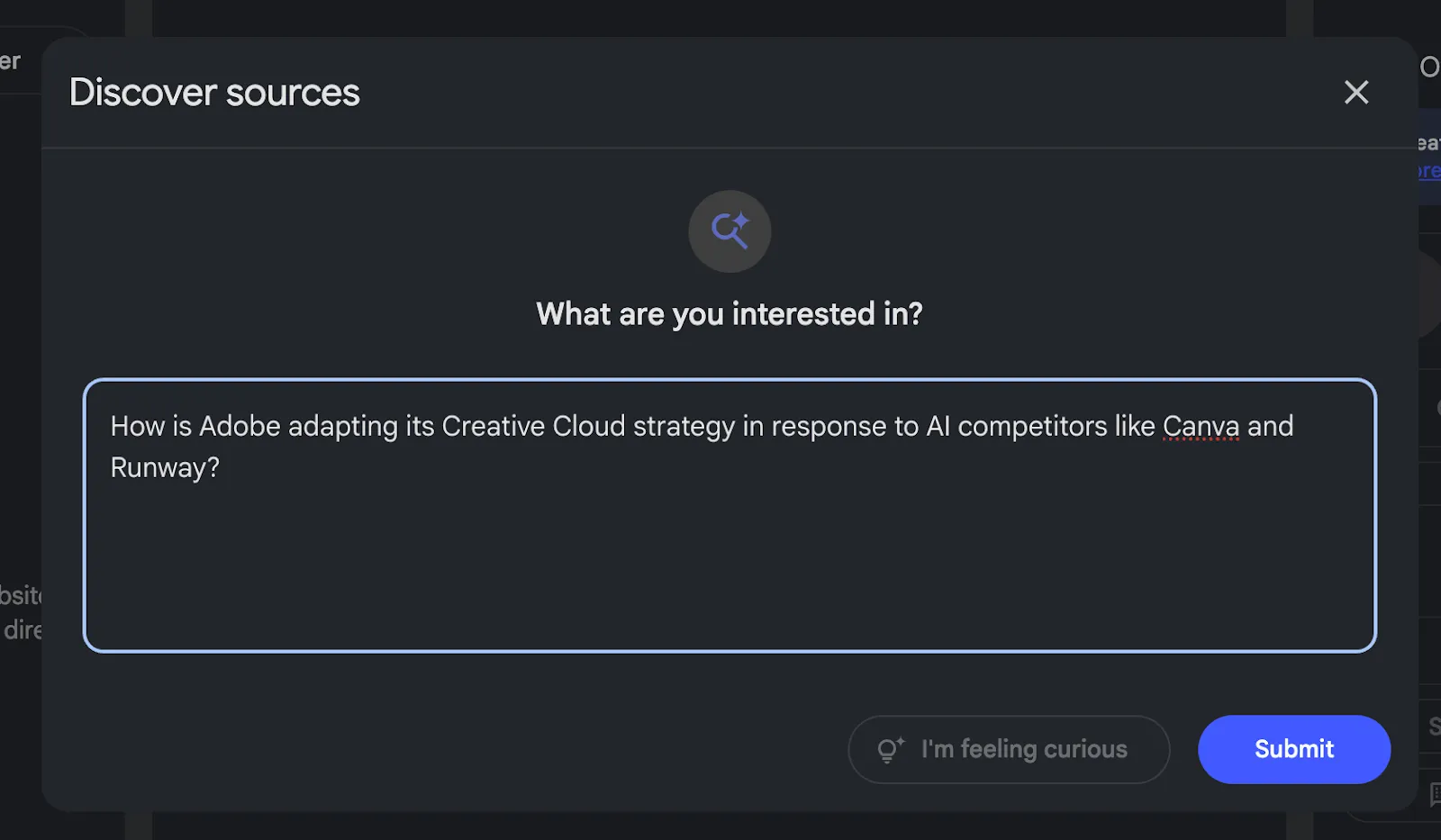
Open NotebookLM and click Discover Sources. Instead of uploading sources manually or typing a broad query like “Canva vs Adobe”, try a focused strategic angle such as:
“How is Adobe repositioning its Creative Suite to defend against AI-native competitors like Canva and Runway?”
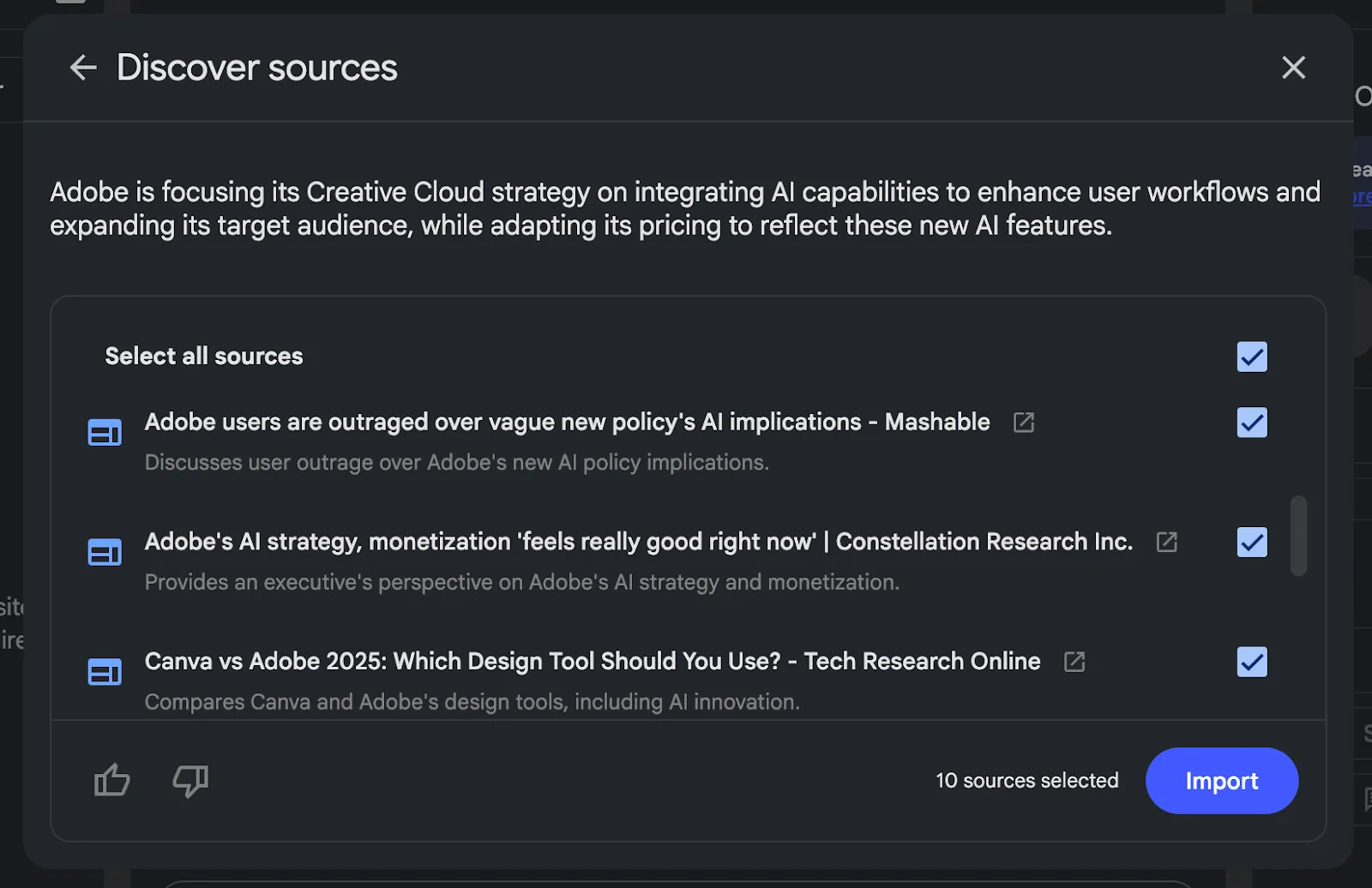
This feature helps you automatically surface relevant sources—news, analysis, product updates, and expert commentary, without the usual hassle of gathering and uploading content yourself.
Step 2: Generate a smart briefing, not just a summary
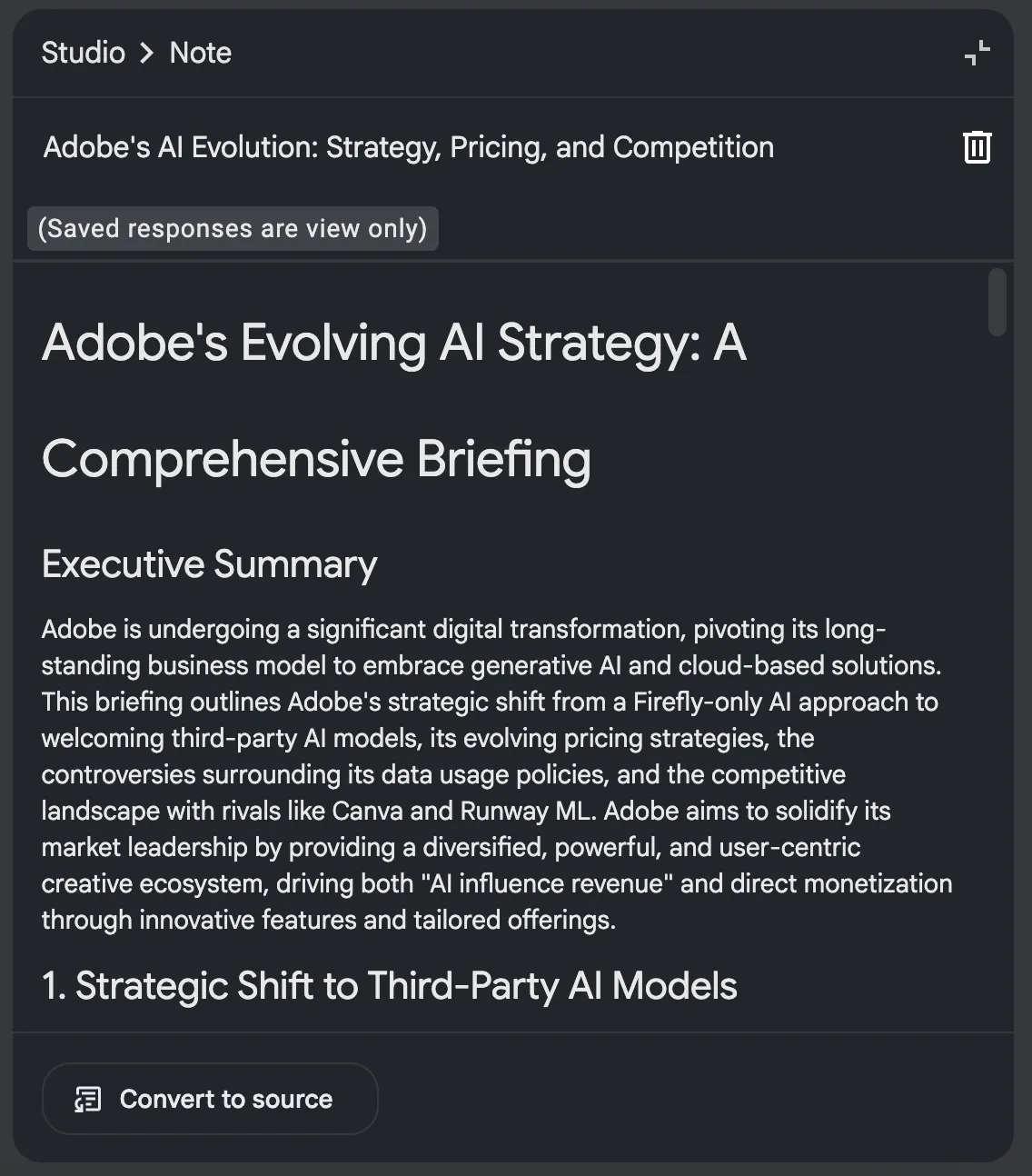
Once your sources are in, you can:
- Ask a strategic question directly, like “What are Adobe’s strategic AI differentiators vs. Canva?”, or
- Click Comprehensive Briefing to get an AI-generated executive summary across sources.
This briefing becomes your baseline, something you can challenge, refine, and annotate.
Step 3: Turn it into an audio-first insight
Use Audio Overview to generate a short podcast-like explanation.
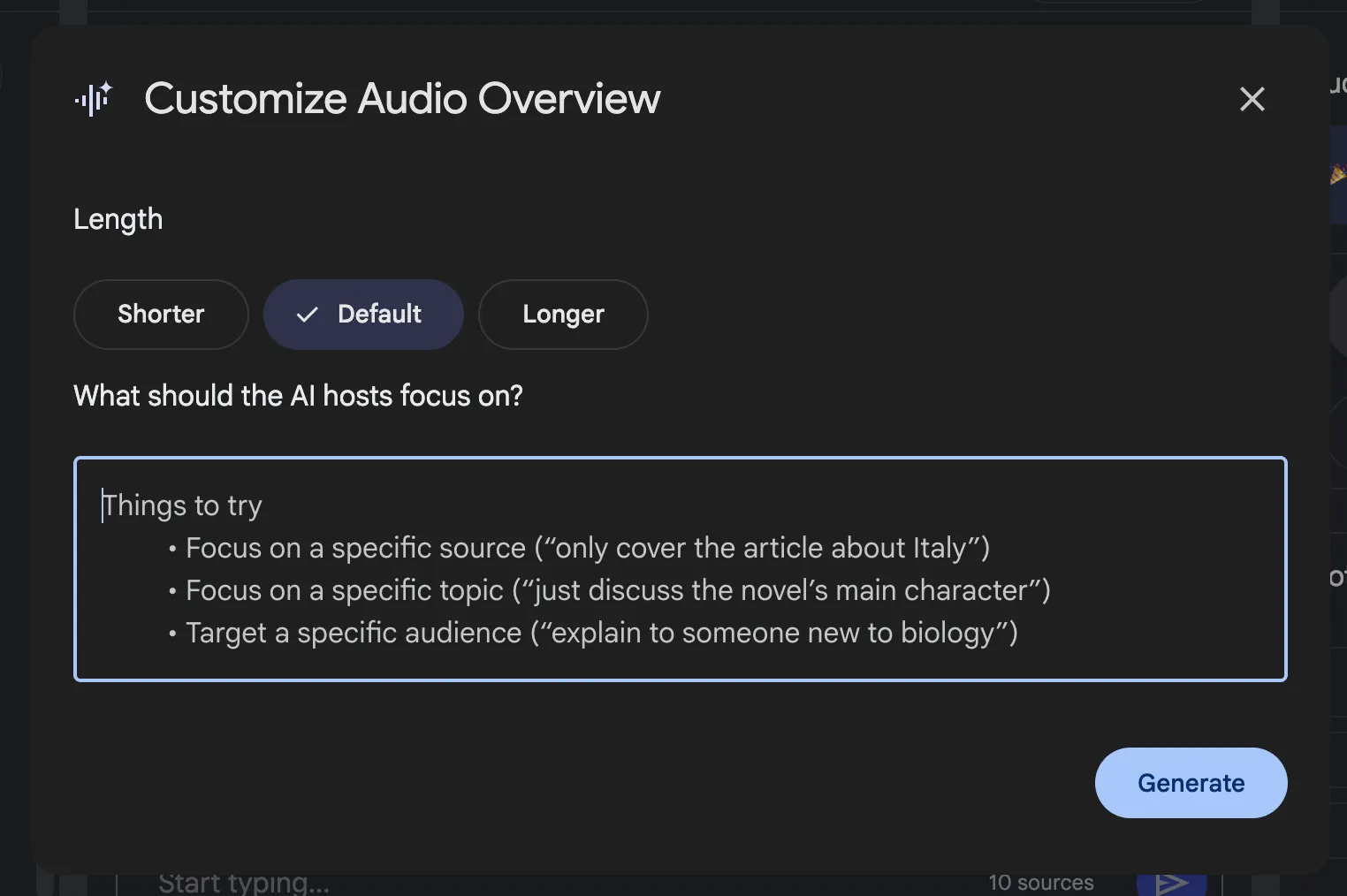
Customize what the AI hosts should focus on (e.g. “Just cover Adobe’s monetization model” or “Explain for a non-technical audience”).
Now you’ve got a shareable, listenable version of your research, for execs, teammates, or even clients.
Step 4: Visualize what matters
Click into the Mind Map view. You’ll instantly see clusters of insight: new product bets, partnerships, emerging threats, user sentiment.

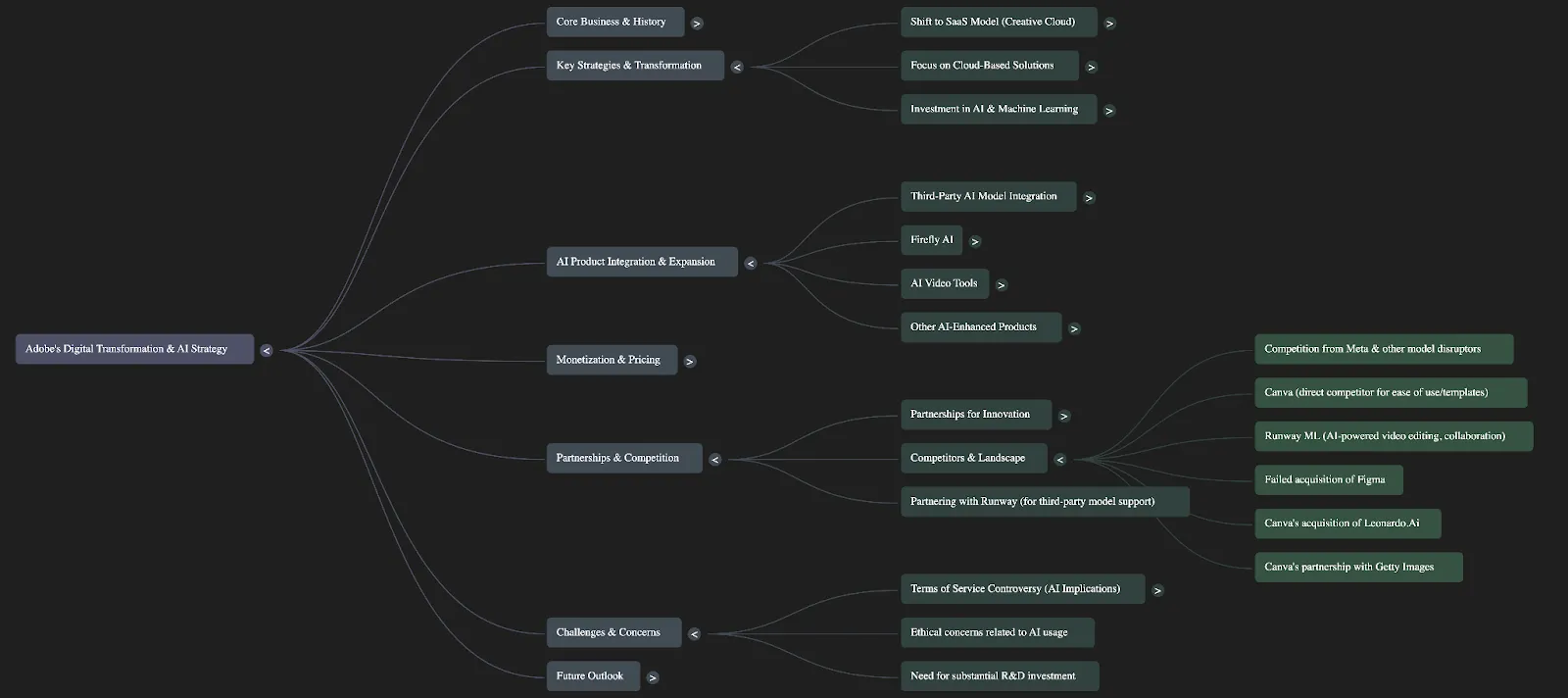
Download this map and drop it into a strategy doc, M&A brief, or competitor battlecard.
Step 5: Put it to work
Ways to use this workflow today:
- Build a competitive deep-dive before launching a new product
- Prep your CEO or sales team with a living briefing doc
- Map strategic positioning for a fundraising narrative
- Monitor quarterly shifts in a fast-moving space
- Or even… create a client deliverable in a fraction of the time
The next time you hear “we need to keep an eye on them,” you’ll already have the deck, the audio, and the map ready to go.

.webp)

